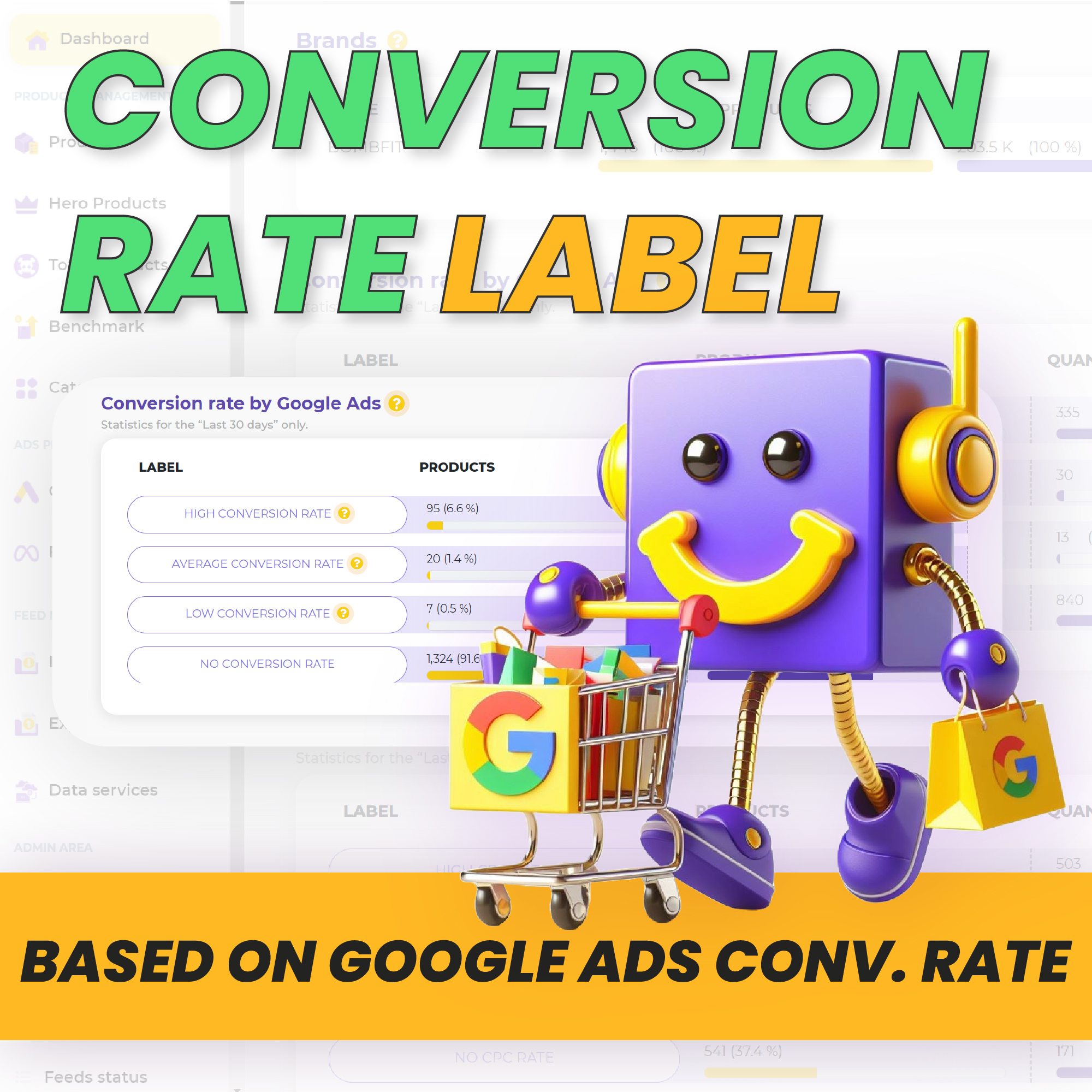Table of Contents
Optimizing E-commerce Campaigns with TRUDA’s “Google Conversion Rate” Label
Understanding and leveraging key performance metrics is essential for driving success. One such crucial metric is the conversion rate, which indicates how often an ad click results in a successful conversion. With TRUDA, an innovative tool designed for e-commerce optimization, harnessing the power of conversion rate data becomes not only feasible but also highly effective.
Understanding the “Google Conversion Rate” Label
The “Google Conversion Rate” label, abbreviated as ‘Conv. rate,’ offers valuable insights into the effectiveness of your advertising efforts. It quantifies the frequency with which an ad click translates into a desired action, such as a purchase, sign-up, or download. This metric is calculated by dividing the total number of conversions by the number of clicks generated by your ads.
Leveraging TRUDA for Strategic Campaign Creation
TRUDA empowers e-commerce professionals to create targeted campaigns based on a multitude of performance metrics, including the Google Conversion Rate. By analyzing the performance of individual products and segmenting them according to specific criteria, TRUDA facilitates the creation of highly tailored campaigns designed to maximize returns.
Key Features of TRUDA:
- Individual Product Performance Analysis: TRUDA meticulously evaluates the performance of each product, providing actionable insights for optimization.
- Custom Labeling for Segmentation: With TRUDA, users can assign custom labels to products based on various performance metrics, including the Google Conversion Rate.
Strategic Segmentation with “Google Conversion Rate” Label
The “Google Conversion Rate” label enables users to categorize products into distinct segments based on their conversion rate performance. The intervals for the conversion rate are predefined (0,2 and 3). You need to configure yours based on the average metrics of your active campaigns. Specifically, in this case, it refers to the average conversion rate existing in your active campaigns over the last 30 days.
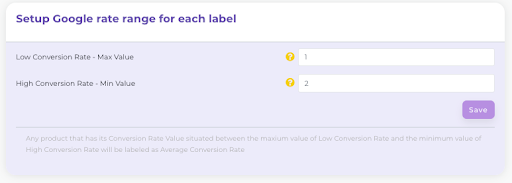

Segmentations include:
- High Conversion Rate
- Average Conversion Rate
- Low Conversion Rate
- No Conversion Rate


For example, if the average conversion rate in your active campaigns over the last 30 days is 1.5%, the two intervals are set around this value. So, if you set the value 1 for “Low Conversion Rate – Max Value” and the value 2 for “High Conversion Rate – Min Value,” then products with a conversion rate between 1 and 2 are grouped and labeled as “Average Conversion Rate.” Products with a conversion rate higher than 2 are grouped and labeled as “High Conversion Rate,” while products with a conversion rate lower than 1 and different from 0 are grouped and labeled as “Low Conversion Rate.” Products with a conversion rate equal to 0 are grouped and labeled as “No Conversion Rate.”
Practical Implementation and Campaign Optimization
Once products are categorized based on their conversion rates, users can effortlessly visualize and manage these segments within TRUDA’s intuitive dashboard. The platform provides comprehensive insights into each segment’s performance, including quantity, revenue, clicks, and associated costs.
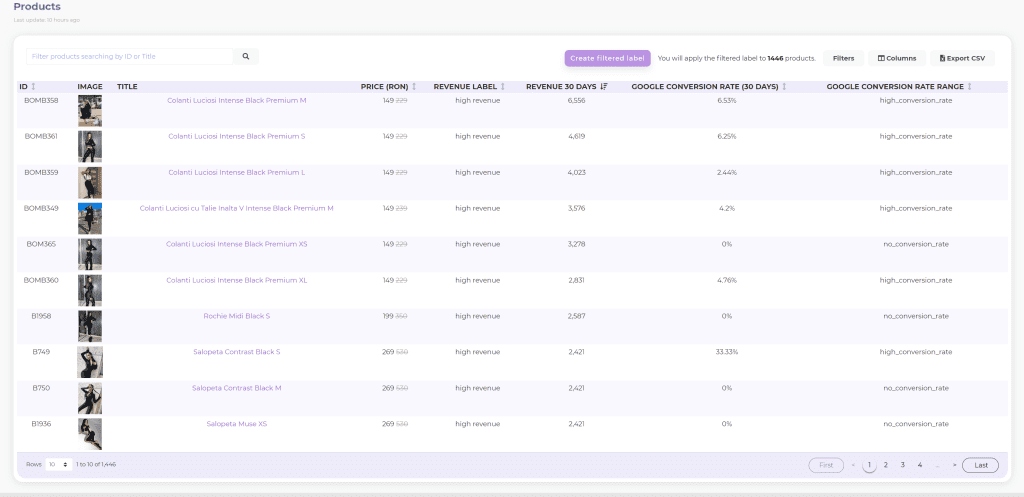

Steps to Create Campaigns with TRUDA Labels:
- Label Assignment: Apply the “Google Conversion Rate” label to products using one of the available custom labels.
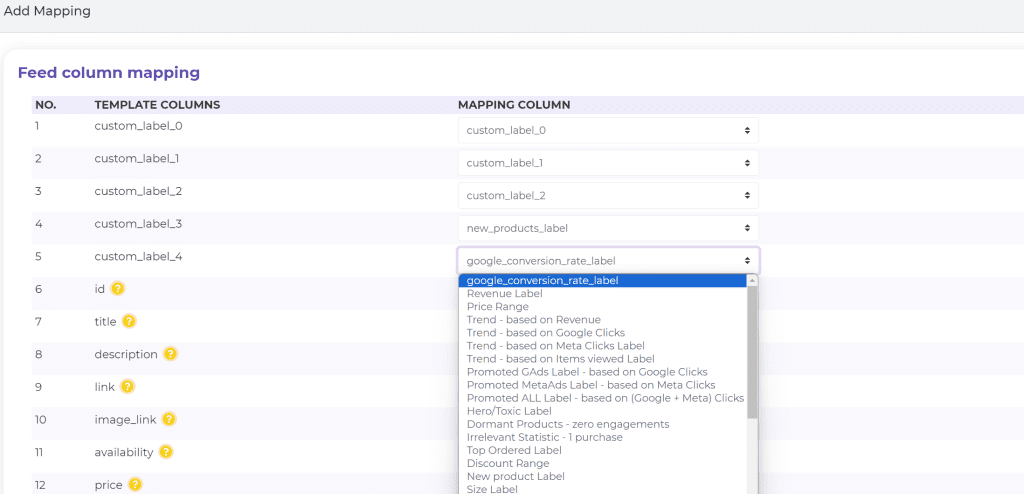

- Feed Export: Export the labeled product feed from TRUDA and integrate it as a supplemental feed in Google Merchant Center.
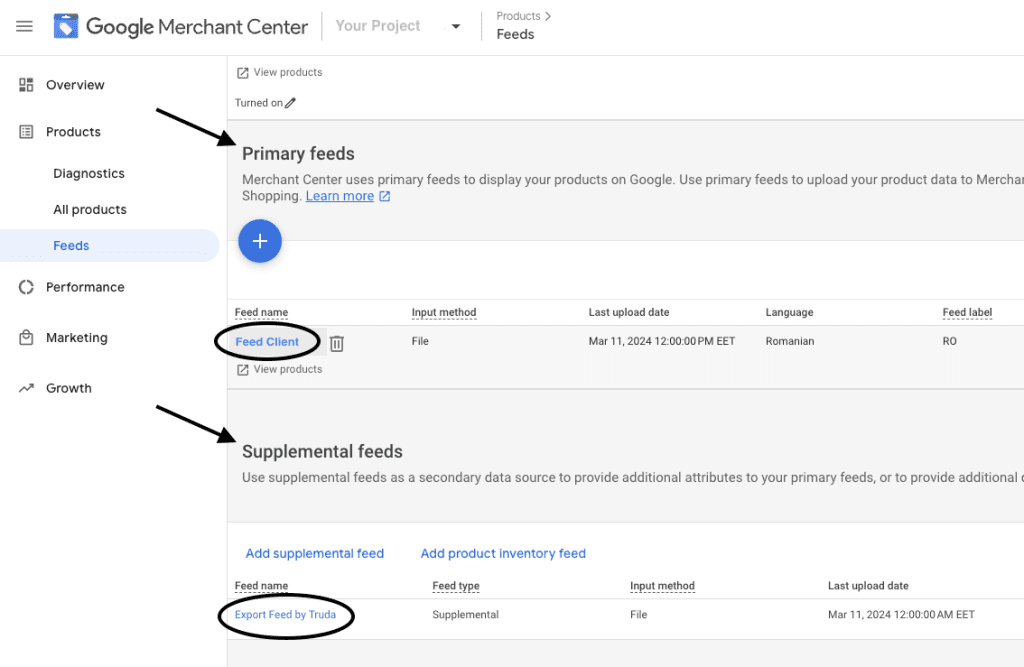

- Campaign Creation: Utilize the segmented product data to create targeted campaigns based on specific conversion rate intervals.
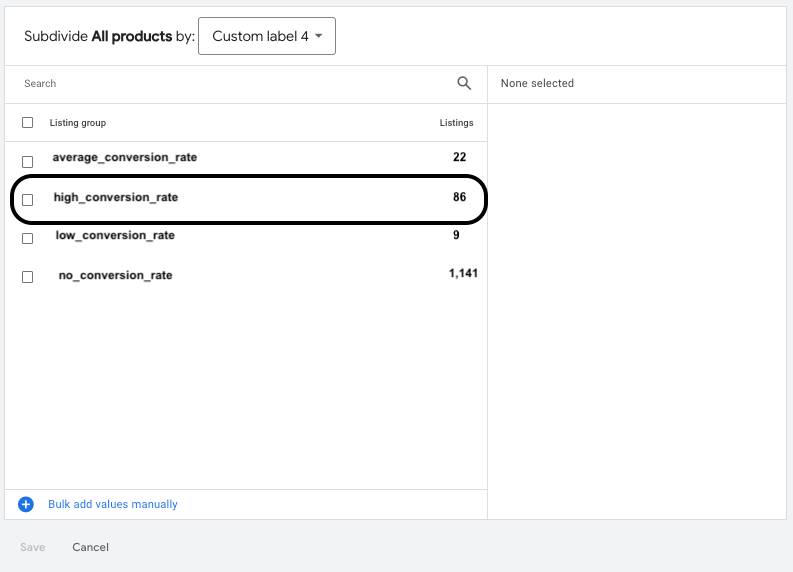

Strategic Budget Allocation with Conversion Rate Segmentation
In addition to informing campaign creation, the segmentation provided by the “Google Conversion Rate” label can also guide strategic budget allocation for Google Ads. By categorizing products into segments based on their conversion rates, businesses can prioritize budget allocation towards segments that yield the highest returns.
For instance, products labeled under “High Conversion Rate” may indicate strong performing items that are likely to generate a significant return on investment (ROI). Allocating a larger portion of the budget to campaigns featuring these products can maximize ad spend efficiency and drive substantial conversions.
Conversely, products categorized under “Low Conversion Rate” may require a more cautious approach to budget allocation. While these products may still contribute to overall revenue, dedicating a smaller portion of the budget to campaigns targeting these items can help mitigate risks and optimize resource utilization.
Integrating Revenue and Conversion Rate Labels for Enhanced Campaign Performance
Combining TRUDA’s Revenue Label with the Conversion Rate Label offers a comprehensive approach to campaign optimization and budget allocation. By leveraging both metrics, businesses can fine-tune their advertising strategies to target high-revenue products with a proven track record of conversion success.
For example, let’s consider a scenario where a company identifies a subset of products labeled as “High Revenue” and “High Conversion Rate.” These products not only generate significant income but also boast a remarkable conversion rate, indicating their effectiveness in driving conversions. Allocating a larger portion of the advertising budget to campaigns featuring these high-performing products can yield impressive results, maximizing both revenue and conversion metrics simultaneously.
Conversely, products labeled as “Low Revenue” but “High Conversion Rate” present an opportunity for strategic intervention. While these products may not contribute substantially to overall revenue, their ability to convert customers at a high rate suggests untapped potential. By allocating a moderate advertising budget to promote these items, businesses can capitalize on their conversion prowess and potentially elevate their revenue-generating capabilities.
In essence, integrating the Revenue and Conversion Rate labels in ad campaigns enables businesses to prioritize budget allocation based on both revenue generation and conversion efficiency. This approach ensures a balanced strategy that optimizes resources and maximizes returns across key performance metrics, ultimately driving sustainable growth and profitability in the competitive e-commerce landscape.
There are also other labels, such as Price Range Label or Promoted Label, that can be added in the integration for even better performance.
Unlocking Campaign Optimization Potential
By leveraging TRUDA’s “Google Conversion Rate” label, e-commerce professionals can unlock the full potential of their advertising campaigns. Armed with granular insights into conversion rate performance, businesses can allocate resources more effectively, prioritize high-performing products, and optimize campaign strategies for maximum ROI.
In conclusion, TRUDA’s integration of the “Google Conversion Rate” label offers a strategic advantage in the competitive landscape of e-commerce advertising. By harnessing the power of this key performance metric, businesses can elevate their campaigns to new heights of success and profitability.
Ready to Optimize Your E-commerce Campaigns? Try TRUDA Today!

